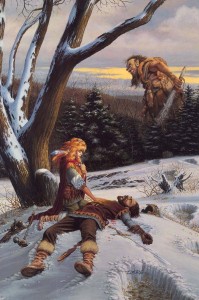On Friday we comb through our extensive archives to find an older article that we feel deserves another look. From April 7, 2010, Dungeon’s Master once again presents: Time in D&D.
Raise your hand if you’ve ever created a level 1 PC, entered a dungeon, killed a bunch of monsters, gained a bunch of levels while still inside the dungeon and then realized that only a few weeks of actual in-game time passed when you emerge. I know I’m not the only one reading this that has his hand up.
Time in D&D is an aspect of the game I find is overlooked way too often. Tracking time in your game may not be that big a deal, but the longer you continue playing that same PC the more important time becomes.
So just how long does it take to go from level 1 to level 2? In 4e D&D it takes about 10-13 encounters or about four gaming sessions. But what I really want to know is how much time passes in-game between levels?


